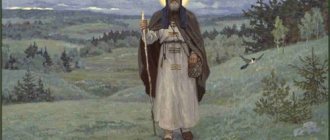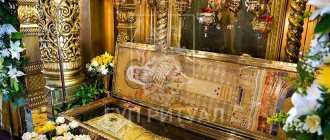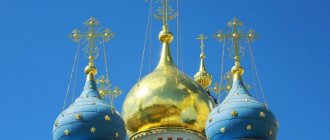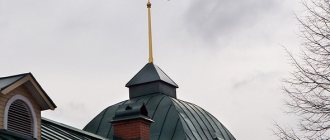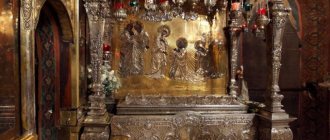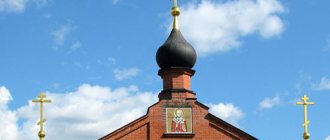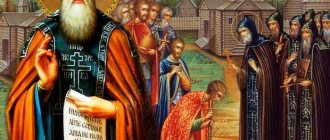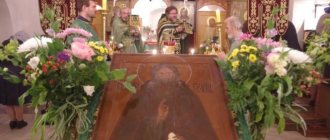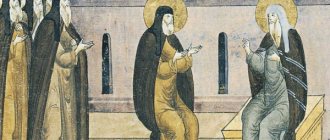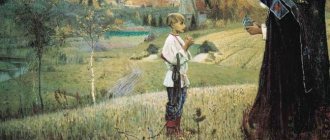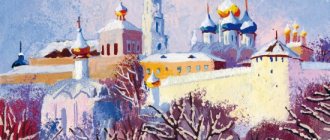Let's start with the main thing.
The mosquitoes in the Moscow region completely demolished the tower. If earlier insects acted more and more alone, now they are entire groups. Organized no worse than maroon berets.
While one little creature, like a fisherman in winter, is making a hole in its neck, its aggressive sidekicks are gnawing on its calves. Ten minutes later they are joined by thugs from nearby villages. A typical Moscow loser who leaves the city without a Raptor becomes the property of a mosquito public. Rumors about him spread like lightning.
So I advise you not to repeat my mistakes. If, of course, you also take a risk and go beyond the glorious city of Mozhaisk. Where, according to legend, living water can be found. It has been bubbling out of the ground for several centuries. And it gives people strength.
The source, based on the number of springs, was called Seven Springs. And they even assigned the territory (with an area of 144 hectares) the status of “natural monument of regional significance.”
There are raspberries here, Protva
I will try not to write about mosquitoes anymore. But you still remember that they were nearby all the way. Their exhausting squeak was like the sound of a dive bomber. I destroyed them like Captain Titarenko, the same Maestro from the film. But there was almost no sense in this. New squadrons flew in to replace the killed ones...
In general, not a word more about them. Just don't forget that they are there. That they are nearby. In every paragraph and sentence.
The nature in the Moscow region is incredible (if only there were no mosquitoes!). In the photo - broadleaf bell. Photo: Pavel KLOKOV
Well, in the village of Semenkovo, too, which I reached by bus No. 35 (flight “Mozhaisk-Vereya”, runs every hour from the sixth platform of the bus station, ticket price is 70 rubles).
I interviewed the garbage truck driver at the waste bins.
“Seven springs... Living water... Reserve... Nope, I haven’t heard of it.”
I have long noticed that we do not see the miracles that are nearby. In the Solnechnogorsk region, for example, I once talked with a local aborigine living two kilometers from Bottomless Lake. This is a unique body of water with a perfectly round shape, the origin of which is debated by scientists. Prokopenko from Ren-TV is filming stories about him. And this one in the Afghan Panama hat hears for the first time... Although he has lived here all his life.
In general, tourist guides help me. And they say that you need to go further towards the village of Zolotkovo and then to the right along the Protva (the left tributary of the Oka). Which is what I did.
In Protva you can catch all kinds of fish - bleak, roach, gudgeon, pike, bream, perch. Photo: Pavel KLOKOV
By the way, there is not a word in the guidebooks about the miraculous water; all sorts of public pages on social networks and websites stuffed with fakes are increasingly suffering from this. But everywhere they talk about the incredible beauty of these same springs. About fabulous and picturesque waterfalls washing moss. About black kites flying above them. About the poisonous bush wolf's bast. And about a fish that is quite rare for these places - the common bitterling. In short, I went to the place where the birds do not stop talking and the jasmine does not fade, and where the sky merges with the earth.
Here I would like to add a little about mosquitoes, but I promised... Not a word more about the fact that they have gone crazy. And about the fact that they took a liter of blood from me, too.
“Hold on, son, rivers, no matter what,” a resident of Zolotkovo told me at the very edge of the village (she had heard about the Seven Springs, but had never seen it herself).
"No matter what?"
The main holy springs of the Moscow region
The history of our state is closely connected with the Orthodox Christian faith. Today it seems that Russia has turned into the last stronghold of Orthodoxy, defending its Faith. The majority of the population of our vast country are deeply religious people. This is evidenced by numerous churches, historical architectural monuments, monasteries and holy springs in Russia.
Quite a large number of Orthodox centers are located in the Moscow region. Where there is a holy spring that grants healing from illnesses and strengthens faith, it is always crowded. We will look at the most visited ones in the capital region.
You are my springs, springs
Walking through the wet grass on a hot July day is even pleasant at first. There is a feeling of life-giving freshness. But gradually the sneakers become heavier and, having softened, begin to squelch. The wet earth sticks to the sole. And I really want to take off these shoes without touching them with my hands. And go barefoot. I didn't do this because I'm afraid of ticks. But there is another option. Normal people, I heard, take rubber boots with them when out of town, especially now, during the rainy season.
Forbs near the Seven Keys Nature Reserve smell like women's perfume. Photo: Pavel KLOKOV
The aromas of the July meadow deserve special description. Of course, I’m not Prishvin, but all this colorful variety of herbs smells like women’s perfume. After the concrete jungle my head is spinning. In the description of the protected area, the list of flora is endless. From the broad-leaved bellflower to the completely unknown to me spots of old grass and warty euonymus.
After three kilometers, I finally entered a small forest, where it was not so stuffy under the treetops. And a few minutes later I heard the sound of water (in principle, there are no signs to the Seven Springs from Zolotkov). This was one of the springs about which, in fact, I am writing. Like a real traveler, exhausted by the scorching sun, I took my modest belongings off my back (a backpack with an iPhone charger and an empty bottle) and, bending my knee, washed my face. The water is ice-cold and looks very clean. Thirty meters later I found another key. It is difficult not to notice it, because it is perpendicular to the path. And it makes more noise than the first one.
The very first spring, if you go from the Zolotkovo SNT. Photo: Pavel KLOKOV
And then, one might say, the culmination. I reached those very picturesque waterfalls that guidebooks write about. True, they are located almost at Protva itself, and I stood at the top - five meters from them. Later, residents of the local SNT told me that there were steps to the springs, but in the spring after the flood they were washed away. I had to literally slide down a slippery slope and, once in the middle, jump down. Without any boasting, I will say that not every tourist will decide to do this. An unsuccessful landing and you end up lying in the swamp, dirty and bruised. But I was lucky because I didn't fall.
The waterfalls really look gorgeous.
“Especially if you go down the river in a kayak,” tourists write in reviews of the Seven Keys. “You can meditate to the sound of the water.”
Or, for example, make a movie. A new version of Tom Sawyer. I can see two boys sitting against the backdrop of these foaming streams, smoking a pipe, contentedly.
Well, I filled a bottle of water, photographed the beauty from different angles and climbed back.
Here I propose to get into the situation. And imagine my crooked, trembling fingers clinging to the slope and treacherously sliding down. I grabbed tree roots and nettles. I twisted my legs into the first position. Helped with elbows and knees. It expired later. And finally I reached a tree that I could safely and securely hold on to. Further on, the slope is no longer so steep, and I, choosing dry places, reached the top along them, like islands. He exhaled. And looking down, he imagined something terrible. How I lie with a broken leg and, washed by magical spring water, call for help.
Ugh. Ugh. Ugh.
The steps to the springs have been washed away and now there is a steep cliff instead. Photo: Pavel KLOKOV
If you arrive and there are no steps, tie a rope to a tree and calmly go down. Or you can approach this place along the river. Especially now, in this heat.
Source of Sergius of Radonezh
On the outskirts of the village of Radonezh, near the Church of the Transfiguration of the Lord, there is another source. The parents of the Russian saint also lived in this Slavic settlement, which appeared in the 9th century. From here Sergius became a monk in 1337 as a young man. The people gave the spring its name. All these centuries, the source has been flowing without ceasing. The holy spring provides clean, cool and tasty water. Old-timers talk about numerous help in healing various ailments. The spring daily gives its Grace to many believers who come here not only from the surrounding area.
It's like honey for tourists here
Then I came out into a clearing with two wooden benches. Then he walked up the metal stairs. And I found myself at the main entrance to the reserve. Where there is a sign with the inscription: “Natural monument of regional significance “Seven Keys”.
And next to it is a list of what is prohibited to do in this territory (officially, according to Decree of the Government of the Moscow Region No. 821/35):
- make fires;
- hunt;
- To cut down forest;
- collect plants;
- enter by any transport;
- build something;
- herd livestock;
- and arrange camping.
Grilling kebabs in the reserve is strictly prohibited.
Photo: Pavel KLOKOV That is, this is where we had to enter - from the territory of SNT “Rodniki”. And I had to take the 35th bus not to Semenkovo, but to the stop “Nadezhda Gardens” (it’s next).
“We don’t know where to get away from these tourists anymore,” a local resident told me while I slapped my neck, killing mosquitoes (ouch!). “Now even though they’ve given it the status of a monument, they seem to be afraid to mess things up.” Previously, they would come on boats and let us walk until the morning. And then clean up the trash for us.
The path from Semenkovo is considered roundabout - it is better to drive up to the Rodniki SNT by car (there is the main entrance to the reserve). Photo: Pavel KLOKOV
Regarding the fact that water from the springs has some healing properties, the pensioner grinned. There’s nothing like that in her, he says. Except lime. You start to boil and a white tint appears. So it's better not to drink it at all. For this purpose, here in the village there are wells in the wells. And the city has running water.
Our information
“Seven Keys” is a natural monument of regional significance.
This place became a specially protected area in 2009.
Photo: Pavel KLOKOV Address: Moscow region, Naro-Fominsk urban district, between the villages of Zolotkovo, Semenkovo, Pushkarka and Merchalovo.
Area: 144.66 hectares.
Altitude above sea level: from 167 to 214 meters.
Habitat: 78 species of vertebrates belonging to 19 orders of five classes, including ten species of fish, four species of amphibians, one species of reptiles, 47 species of birds and 17 species of mammals.
How to get there
Train + bus
Go to Mozhaisk by train from Belorussky Station, then by bus No. 35 to the “Nadezhda Gardens” stop.
Car
From Moscow along the Kyiv highway to Naro-Fominsk. Turn onto Naidova-Zhelezova street and on the Kubinskoe highway follow the sign “Tashirovo village”. Then go to the village of the Vereya Holiday Home. After which there will be a right turn towards the Rodniki gardening association.
Optina Pustyn – Shamordino
The desert is located on the banks of the fast river Zhizdra, cutting it off from the rest of the world, and is surrounded by forest. The Holy Vvedensky Monastery is one of the oldest in Russia. According to local legend, the monastery was founded by the ataman of a gang of robbers, nicknamed Opta, who repented and took monastic vows with the name Macarius. L.N. Tolstoy, F.M. Dostoevsky, N.V. Gogol visited here. Near the monastery on the bank of the Zhizdra River there is a spring of St. Paphnutius with a font. It's easy to find. You need to leave the monastery gate, turn right and walk along the forest along a country road to a metal barrier. Then go out onto the path that this barrier blocks and walk along the river bed. After 350 meters there will be a fenced spring.
How to get there
By car
Drive along the Kievskoye Highway, passing the turn to Kaluga. At the 186th kilometer of the highway you need to cross a road bridge, after which there will be a sign for Optina. Next we head towards Kozelsk - straight ahead all the time and near the monument following the sign to the right. There, go to the traffic light and turn left. After the bridge over the river, take the first left (there is a sign there). The road from the highway to Kozelsk is for the most part not bad, but you can also drive through Kaluga, especially on the way back; signs for Moscow lead through Kaluga.
On your own
A bus leaves daily from the Yugo-Zapadnaya metro station on the route Moscow - Kozelsk. From the bus station in Kozelsk to the monastery it is about three kilometers.
Where else are the springs flowing?
There are officially 730 springs in the Moscow region. Many of them are also popular among tourists and pilgrims.
- The Source of the Holy Spirit of the Comforter in Sergiev Posad is fully equipped (there is lighting, a chapel and a font). The water contains a lot of silver and, according to research, is suitable for drinking. Address: Sergiev Posad urban district, Smena village. How to get there: from Yaroslavsky station to Sergiev Posad by train, then bus No. 38 (to the village of Smena).
- The Gremyachiy Klyuch spring in Sergiev Posad flows from a 20-meter height and also looks like a waterfall. According to legends, it made its way back in the time of Sergius of Radonezh, when he sat down in this place to rest before praying. Pilgrims are sure that water helps with heart disease and women's diseases. Address: Sergiev Posad urban district, Vzglyadnevo village, 67th km along Yaroslavskoe highway. How to get there: to Sergiev Posad by train, then by bus 37 to the village of Shiltsy.
- Spring “Barsky Well” in Muranovo The source is located next to Tyutchev’s estate, and therefore the spring was nicknamed “Barsky Well” at one time. Nearby there is the Church of the Savior Not Made by Hands. There are a lot of pilgrims. The water is also clean. No bacterial contamination was detected. Address: Pushkin city district, Ashukino settlement, Muranovo village. How to get there: from Yaroslavsky railway station to Sofrino or Ashukinskaya station by train and then by bus No. 34 (stop “Museum “Muranovo”).
- Source "Talezh" in the Davidova Hermitage This spring can be found 30 kilometers from the Ascension Davidova Hermitage monastery. There is no need to jump to it from a cliff. The area around is landscaped, illuminated and paved with stone paths. There is a swimming pool. Address: Chekhov urban district, village. Talezh, David's Hermitage. How to get there: from the Kursky railway station to the Chekhov station by train, then by bus No. 25 (stop Talezh).
- The source of St. Savva Storozhevsky in Zvenigorod. It is located next to the Savvino-Storozhevsky Monastery. People with eye diseases are most often recommended to drink water as an aid. Pilgrims also stock up on monastery bread and kvass. Address: Zvenigorod, right bank of the Razvarnya river. How to get there: from Belorussky railway station to Zvenigorod by train, then by bus No. 23 or No. 51 to the Monastyr stop.
Holy places of the Moscow region
Holy Baptism
The most important sacrament, after which those who have undergone it accept the Christian faith and become worthy of the Kingdom of Heaven. In Rus', after the adoption of Christianity, bathing in consecrated springs became a favorite folk tradition. By immersing themselves in healing waters, believers received spiritual cleansing, and along with this, boundless, inexplicable joy. Some cases of ablutions led to healing from physical or mental illnesses.
Ablution springs are available throughout the calendar year. They give special power on the church holiday of Epiphany. On this day, for reasons still inexplicable to humans, water throughout the planet changes its qualitative composition. Even tap water collected for Epiphany can be stored for a very long time without changing its normal color and smell.
Scientists even conducted a comparative analysis of drinking water from the tap and collected from a holy spring. Analysis of water from holy places showed the absence of any bacteria, as well as high biological activity. Faith and prayer have such a strong impact on the structure of water.
The power of faith
The saints of the Orthodox Church never doubted the healing power of the water with which the springs are full. Each believer must decide for himself how to relate to this. Numerous cases of cures for illnesses, sometimes even documented, raise more questions than they provide answers. Skeptics view such cases as favorable coincidences. But in life, a successful course of events is sometimes a miracle.
If Faith is strong, then ordinary tap water can work miracles. Everything is the Will of God.
Znamensky source
The source gushes on the slope directly from under the roots of the trees, forming a small stream. In the second half of the century before last, the icon of Nicholas of Myra appeared in the waters of the spring. An old shepherdess found her and brought her home. However, in the morning the icon disappeared. Soon other shepherds found this icon there again and took it to the merchant from Znamenka. His icon also disappeared the next day.
For the third time, the icon was found by the rich peasant Alexei Ivanovich. He was a pious man and immediately erected a chapel at the spring, and enclosed the spring itself in an oak well.
People from all over the area go to the spring to pray to St. Nicholas the Wonderworker on St. Nicholas, and at the beginning of the last century people gathered from all the Volga provinces.
Holy Lake
A narrow and winding lake located behind the village of Syezzhee is a special holy place on Samara land. In 1958 there was an appearance of God here. From the hole, a village resident saw a glow. In the radiance one could distinguish the church, the altar and the Mother of God, St. Nicholas the Wonderworker and the archangels standing nearby.
People came running and many received healing. The authorities did everything they could: they filled the lake with manure and filled it with diesel fuel. But the miracles continued. Believers and curious onlookers were even driven away with water from a fire hydrant. But people still went to the lake to look at the heavenly faces.
After this, the lake began to have inexplicable properties. The mosquitoes and midges, of which there are incredible numbers here on the neighboring lakes, have disappeared. Water has a buoyant force. There are fish in the lake, and large ones, but no one can boast that they managed to catch even one.
And one day at dawn, balls of all colors of the rainbow began to fall from the sky onto the lake and the adjacent shore. They moved along the water surface and shore in different directions. There was a commotion in the village. Most of the residents tried to catch them, but no one succeeded either.
After these events, scientists studying anomalous phenomena, as well as biologists, became interested in the lake. The fact is that plants grow on the shoreline of the lake that are not found anywhere else in the Samara region. Water collected from the lake can be stored for more than 10 years, maintaining a pleasant taste and smell. Sediment and algae that fall into the water storage tank are completely dissolved in a short time. Such properties cannot be explained scientifically until now.
Those who recently visited the wonderful lake said that it had become noticeably shallower, and the shores were increasingly clogged with tall reeds. No one knows what is causing these changes. But water still has its wonderful properties.
Holy springs of the Samara region
The Samara land is also rich in life-giving springs - there are 1,536 known springs in the region. A little more than 40 are considered blessed and holy. Among them there are nameless ones, but the main number were consecrated at different times as the site of the appearance of miraculous icons of the Most Holy Theotokos and saints of God.
After the era of Soviet atheism, when Orthodoxy suffered unimaginable destruction, Russia's holy springs are being restored again. Both local authorities and the diocese and believers are taking a large part in restoring the infrastructure and improving the area adjacent to the springs. People come to these places not only from all over the region. There are many visitors from different parts of the country who, having learned about many cases of relief from various ailments, come here in the hope of finding help.
